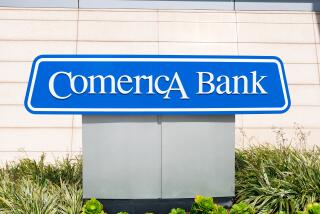First Boston, Others Say Campeau Risk Overstated
- Share via
NEW YORK — The investment banking firm First Boston Corp. said Wednesday that court documents significantly overstate its exposure to losses from the bankruptcy filing this week by Campeau Corp.’s two big U.S. units, Federated Department Stores and Allied Stores.
In a written statement, the firm said court filings by Federated and Allied indicating that First Boston holds $526 million of the two firms’ unsecured obligations are technically correct. But the firm said it estimates that the maximum loss it could possibly suffer really amounts only to $293 million. Jack Cowell, a spokesman for the firm, said confusion over First Boston’s potential losses had caused a flurry of worried phone calls from customers as well as colleagues at other Wall Street firms.
In a separate development, at least two commercial banks said on Wednesday that they had been listed as major unsecured creditors in the Campeau bankruptcies even though the banks themselves aren’t really exposed to any losses. Security Pacific National Bank and Manufacturers Hanover Trust Co. said their names appeared on the list of unsecured creditors simply because they hold bonds in their own names in custodial accounts for customers.
First Boston was a major adviser to Campeau in its acquisition of Federated and Allied. The firm also loaned Campeau money for the Federated acquisition, underwrote junk bonds connected with the transaction and holds many of the bonds itself. Federated and Allied on Monday filed for protection from creditors under Chapter 11 of the U.S. Bankruptcy Code.
First Boston said several factors explain the big discrepancy between the figures in the court filings and the actual amount of the firm’s risk. The investment bank said the bankruptcy filing lists the value of securities the firm holds at their face, or par, value. But the firm said it acquired many of the bonds at far less than face value through its underwriting activities and from its activities as a market maker for the bonds.
The bankruptcy filing also includes bonds that are held under the firm’s name, but which really belong to customers, a common practice on Wall Street. In addition, the court papers include so-called zero coupon bonds at their full value at maturity. But the actual market value of the bonds is much less because such bonds pay interest only in a single lump sum when they reach maturity, in this case in 2004.
First Boston said its estimate of a maximum potential loss of $293 million includes the amount the firm is owed under a $250-million “bridge” loan made to help finance the Federated acquisition in 1988.
The firm said t had adjusted its balance sheet at the end of 1989 to reflect the value of the securities at their current market value, and lowered its reported earnings for the year to reflect this. In addition, the firm is understood to have created a $100-million reserve to cover potential additional losses related to Allied and Federated. Nevertheless, the firm said it still ended the year with a positive net income.
More to Read
Inside the business of entertainment
The Wide Shot brings you news, analysis and insights on everything from streaming wars to production — and what it all means for the future.
You may occasionally receive promotional content from the Los Angeles Times.










